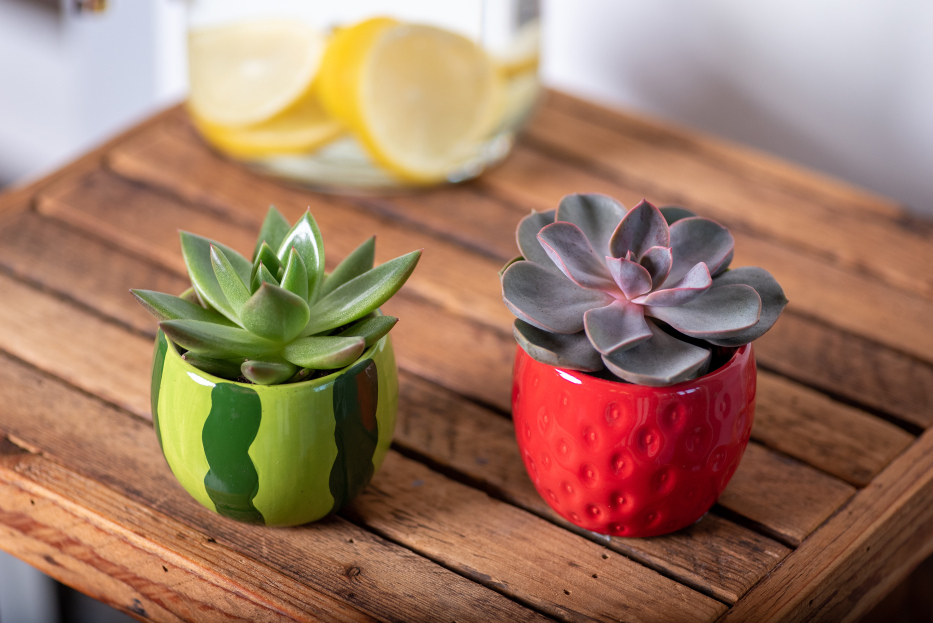
Whether you're a seasoned plant enthusiast or just starting, succulents are a fantastic low-maintenance option for any collection. These unique plants are adapted to store water in their thick, fleshy leaves, stems, or roots, enabling them to thrive in arid conditions. Remember, while all cacti are succulents, not all succulents are cacti!
Succulents have varying light needs based on their species. Sun-loving species like Echeveria require several hours of direct sunlight daily.
Succulents store water in their leaves, so you should only water them when the soil is completely dry, which is typically every 2 to 4 weeks. In pots without drainage holes, be extra cautious to prevent root rot by watering sparingly. It's better to underwater than overwater!
To give your plants an extra boost, use a cactus or succulent-specific fertilizer once a month during the growing season (spring and summer). This will help maintain their growth and vibrancy.
Succulents benefit from being repotted every 1 to 2 years. Use a pot with proper drainage and a well-draining soil mix designed for succulents or cacti to prevent root rot. If your pot lacks drainage, consider adding a layer of stones at the bottom to improve air circulation around the roots.
Succulents prefer warm, dry environments and are typically tolerant of low humidity. Keep them in temperatures ranging between 60°F to 80°F (15°C to 27°C). Avoid exposing them to frost, as cold temperatures can damage these heat-loving plants.
Succulents are easy to propagate using leaf or stem cuttings. Allow the cuttings to dry for a few days to form a callus, then plant them in well-draining soil. With a little patience, they’ll form roots and grow into new plants.
Succulents enter dormancy in response to changes in temperature or light, slowing their growth and requiring less water. Winter-dormant varieties like Echeveria grow in spring and summer, while summer-dormant species such as Aloe prefer cooler months for growth.
Not all succulents are safe for pets. Toxic varieties include Aloe, Jade, and Kalanchoe, which can be harmful if ingested by cats or dogs. However, non-toxic ones like Haworthia, Echeveria, and Sempervivum are pet-friendly options. Always check the specific variety to ensure it's safe for your furry companions.
Yes, but you’ll need full-spectrum grow lights that mimic sunlight to keep your plant healthy, especially during winter or in low-light homes.
Succulent leaves may grow upward due to insufficient light or environmental stress. It’s their way of reaching for light.
Translucent, mushy leaves are a sign of overwatering and root rot. This is often caused by poor drainage or watering too frequently.
Happy planting!